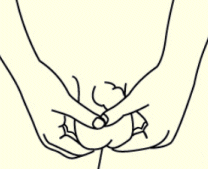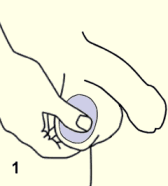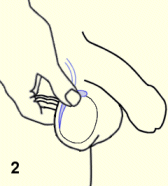|
Physical Problems in Males
|
|
Testicular Self-examination
|
|
It is very useful for all males to examine their testicles regularly and to look for possible signs of cancer. Especially young men between the ages of 15 and 35 should do this at least once a month. Generally speaking, testicular cancer is rare, but it does occur more often in young men than in older men. However, if detected early, it may be completely cured. Males born with an undescended testicle are at a higher risk than the others. This remains true even after the condition has been corrected by surgery. Still, having moved the testicle down into the scrotum makes it easier to detect and treat testicular cancer if it develops.
How to examine the testicles
The object of a testicular self-examination is to find any possibly developing suspicious lumps inside the scrotum on or near the testicles. However, such a lump must be distinguished from the epidydemis, which sits on top of each testicle and can also be felt through the scrotal skin.The examination itself should follow these steps:
- It is best to take a hot shower or bath first, because heat will relax the scrotum and thus make the examination easier.
- Standing in front of a mirror will help in looking for any possible swelling on the scrotum.
- Each testicle is examined separately, most practically with both hands. The index and middle finger are placed under the testicle and the thumb on top. It is then possible to roll the testicle gently back and forth while the thumb feels its normally smooth surface.
- The thumb can also easily locate the epidydemis, i.e. the sperm-collection tube that sits on top of each testicle. Its clearly delineated shape can easily be felt, and it must not be confused with an abnormal growth. Suspicious lumps or growths usually sit on the side or in front of a testicle. They may be small (the size of a pea) or noticeably large.
- If any abnormality is found, a doctor should be consulted immediately.
|
|
|
|
Self-examination: 1 The surface of the testicle should be elastic and smooth. 2 The epididymis (sperm collection tube) should be clearly delineated.
|
|
|




